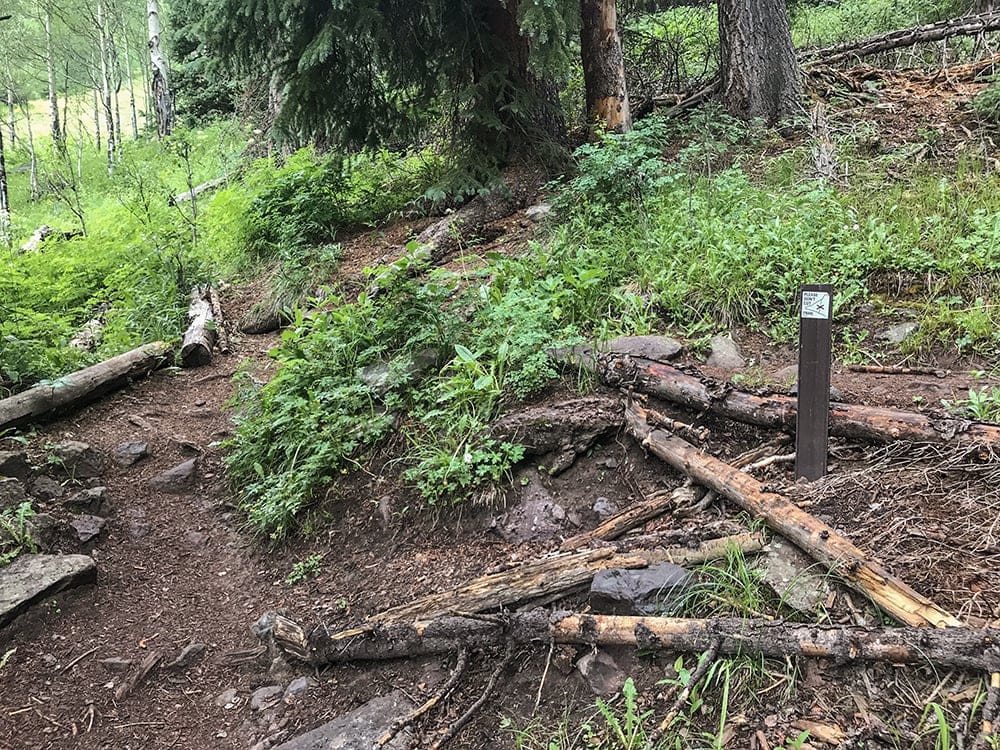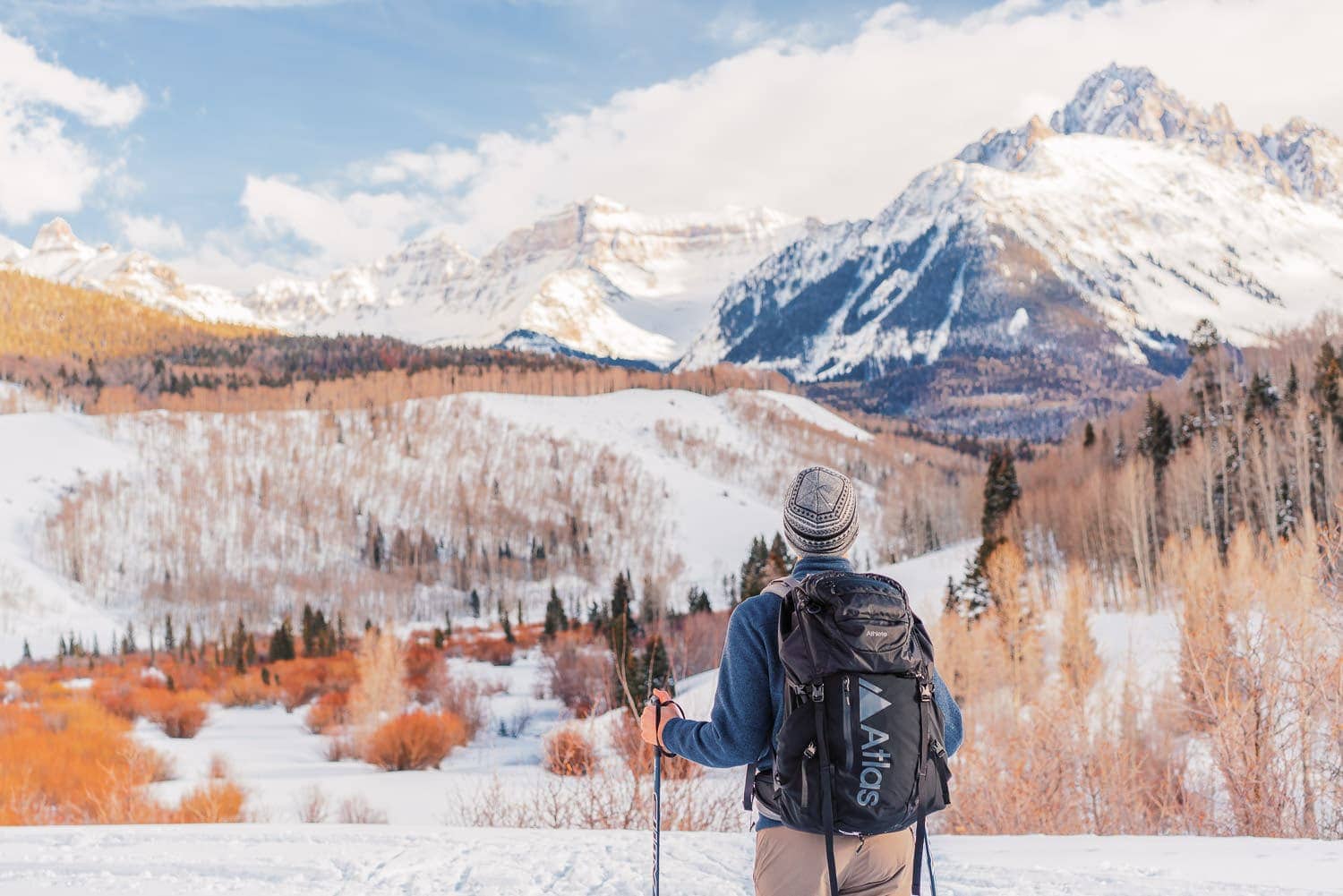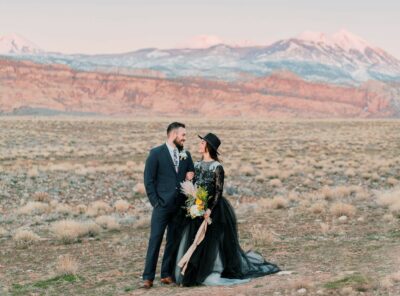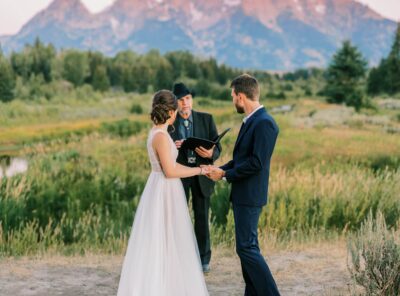Leave No Trace & Elopements
If you’re an outdoor enthusiast like me, you’ve probably at least heard of leave no trace. Leave no trace (LNT) is a set of guidelines for outdoors ethics set in place by the Leave No Trace Center for Outdoor Ethics. According to their website, 9 out of 10 people are uninformed about their impact on the outdoors. We need to change that! How exactly do the principles of leave no trace apply to elopements? Keep reading to find out!

Did you know that I am an official leave no trace aware photographer? I took a course designed for photographers that was put together by a collaboration with the Leave No Trace Center for Outdoor Ethics along with some other elopement photographers. Also, when you book an elopement package with me, you get a leave no trace guide!
Learn more about the course here!

Guidance on Social Media Use from the Leave No Trace Center
Social media has had a huge impact on outdoor areas in recent years. Areas like Horseshoe Bend in Arizona have had a huge surge in visitors without the resources or infrastructure to sustain such a large increase in visitors in such a short amount of time. The Leave No Trace Center asks people to consider “Would this place be as impacted as it is now had it not been for Instagram, Facebook, Twitter, Snapchat or Pinterest?”
Before you post a photo of your amazing elopement, a selfie, or photos or videos of the gorgeous landscape, stop & think about what impact sharing these photos or videos may have. I highly recommend that you do not geotag specific locations. Tagging specific locations allows people to easily see exactly where a photo was taken. So many people may then just want to go to that location, just to have their own photo, with little consideration for leaving no trace.

I personally get many messages, emails, & comments asking where certain locations are. I don’t share specific locations, not out of selfishness, but because broadly sharing remote locations with people I don’t know & haven’t met is not good for the long term health of those environments. Not to mention the fact that I have spent countless hours upon hours searching, exploring, & finding amazing locations & it is a part of what my clients pay me for in giving them an amazing elopement experience.
You also want to be careful about what your photos or videos show. You definitely don’t want to go off trail or other durable surfaces in such areas alpine meadows of wildflowers just to “get the shot”. Others see this & can be influenced to do the same, having a negative impact on the environment. You can also use your social media posts to inspire & educate others about outdoor ethics. Be an influence for the better!

Plan Ahead & Prepare
Planning ahead & preparing is one of the most important principles of LNT, especially if you are going to be doing any hiking, backpacking, or adventuring outside for your elopement. When you plan ahead & prepare, you are able to safely enjoy your time. Poor planning can degrade the land & put yourself at risk.
What do you need to consider when planning? First of all, you need to know your skill level. Can you handle a high altitude hiking elopement with a lot of miles or do you need to choose a location for your elopement that is easier to access?
Next, learn about the area. Learn the weather patterns, animal activity, hazards, trail conditions, sunrise & sunset times, & seasonal changes. After learning more about the area, bring the right clothing & other gear to keep you comfortable & safe. I definitely recommend bringing extra shoes & additional layer you can throw on, especially in the mountains.
You also need to know if there are any restrictions or permits needed. Most public lands require permits for elopements & adventure weddings. Other things to consider include food & water you’ll need, offline maps for areas outside of cell coverage, terrain, & hiking speed.
Travel & Camp on Durable Surfaces
Traveling on durable surfaces is extremely important for elopements. In this Instagram age, countless people want to “get the shot” just for their Instagram. Unfortunately, many times getting the shot they want means traveling off trail or off durable surfaces & damaging sensitive areas.

Staying on the trail reduces your impact on the surrounding environment. You may want to cut across switchbacks to take shortcuts, but those switchbacks through the forests in the steep mountains are there for a reason. They help a lot with preventing erosion. If you had a trail that went straight up a steep slope, it would create a river over the trail when it rains. It’d eventually widen the trail & cause more damage.
Traveling on durable surfaces doesn’t always mean staying on the trail, areas of rock or gravel or bare ground are considered as durable surfaces. Some barren looking areas aren’t actually barren though. Rocks covered in lichen & living cryptobiotic soil may look barren, but these areas are alive & are important to local environments. How on earth do you keep track of all this? Part of it goes back to the first principle of leave no trace- planning ahead & preparing. Also, if you have an educated elopement photographer, you can take a back seat & relax, knowing I will guide you through everything out need to know!

Dispose of Waste Properly
Waste can have one of the biggest impacts on the land, water, wildlife, & the experience of others. Picking up after yourself & packing out waste is definitely not always pleasant.
“Pack it in, pack it out.” If you’re going on a hike of any significant length, you’re likely going to be taking food, water, & other items with you. Plan & prepare snacks & meals that don’t create a lot of waste with packaging that is easy to keep clean or pack out. Carry some bags with you to pack out your trash, & if you see trash that others have left behind, pick it up. It’s up to all of us to keep nature wild & beautiful.
One thing that many people overlook is organic waste. Those orange peels, apple cores, & pistachio shells may be organic & natural, however, they are likely not natural to the specific environment you are in. Organic waste can provide unnatural food sources for animals. Besides, no one wants to see a bunch of orange peels littering the trails in the mountains.

Certain national parks have restrictions about what flowers can be used. Certain types of flowers can tend to drop seeds or loose petals or flower head easily. Many place do not allow the use of baby’s breath or other florals for this reason. Other things not allowed is the throwing of rice, flower petals, plastic confetti, bird seed, etc. Most of the time you will also not be allowed to place large decorations or arches, use balloons in any way, or place signs in the park. Parks & other such lands are public spaces, so it is best to keep it simple! Who needs a bunch of decor when you have amazing views!
With hiking elopements, sometimes you may have to pack out toilet paper & other waste. There are many systems available that are specifically made for this purpose. In other areas, human waste can be buried. It should be buried in an area away from human traffic & at least 200 feet from any water sources. Knowing the regulations of a certain area will go a long way in helping you plan.

Leave What You Find
Leaving what you find & see in a natural environment is very important. It may seem like picking a few wildflowers won’t make a significant impact. But if everyone visiting the area thought the same thing, a much bigger change for the worse could take place.
Carving your initials in a tree can seem like an innocent & romantic thing to do, but these natural areas don’t really belong to us. These natural areas deserve to be left as undisturbed as possible for the next person to enjoy.
You want to avoid altering an area too much, especially ceremony sites for elopements. Instead of creating a ceremony location, you want to find a naturally occurring location that will work for your needs. Who needs to decorate when you are eloping in the great outdoors anyways?! Nature is the best decor, trust me.
If you need help finding a location for your elopement, reach out! I have many location ideas in mind & even if I’ve never been to an area before, I know where to look & what to look for to help you find an amazing location.

Minimize Campfire Impacts
Impacts from fire aren’t something that is too common with elopements. But if you are camping or do decide to have a fire, there are some things you will want to take into consideration so that you can leave no trace.
Before building a fire, consider the impact it could have. Desert areas & high alpine environments are usually lacking in wood & they need all the help they can get. If there is wood in these areas it is best to leave it so it can decompose, add nutrients to the environment, or provide food or homes for critters.
Also be sure to know if there are any fire restrictions from various agencies. Other things to consider are sparklers or even sparks or heat that can come from a car. In certain areas sparklers are banned because they drop a lot of sparks that can easily cause unnatural wild fires. You should definitely be aware of any fire warnings & is the fire danger is low or high.

Respect Wildlife
Elopements that take place in outdoor spaces, national parks, & other areas of nature need to take into consideration the wildlife of the area.
Wildlife deserves our respect, after all, we are just visitors to their homes. Following all the other principles of leave no trace is going to also help you show respect for wildlife.
Overall, the goal of leaving no trace is to minimize our impact on the environment & show respect for the outdoors.
What special considerations might you need to take into effect for elopements? Many mountainous areas are home to bears. In bear country, be sure to dispose of waste properly in bear proof trash cans or dumpsters, don’t just leave trash sitting outside the trash can if it is full. When bears come into contact with humans & start relying on them for easier access to food, it can result in a dead bear. A fed bear is a dead bear.

You also may be hiking where bears are common, I always carry bear spray with me in bear country. But the best deterrent is to make noise to alert bears to your presence. Bears have great senses & if bears can hear you coming, they’re likely going to do what they can to avoid you.
Although it may seem cool or cute, don’t feed wildlife such as chipmunks, squirrels, or birds. Human food isn’t good for them & it decreases their natural fear of humans. Human food can also fatten them up unnaturally & cause them health problems. You may think feeding them one little piece of food isn’t anything to be concerned about, but what if the next 100 people that came along thought the same thing? Not feeding the wildlife is showing respect for it. You are helping the animals live healthier, safer lives.

Be Considerate of Other Visitors
Why do people go outside? To enjoy nature! Being respectful of nature also shows consideration for other visitors who came before you & who will come after you.
To help minimize the impact that your elopement ceremony may have on the experience of other visitors, you are going to want to keep it on the smaller side. Certain national parks & other outdoor areas have a limit to how many people can be in a group in certain areas. In other areas there may not be specific rules, but just be considerate & use good judgement.
The outdoors are best enjoyed in their natural state, without music playing too loud & without carvings in rocks & trees. Pick up after yourself & pick up any other trash that others may have left behind, it’s just the good thing to do.
If you are hiking, yield to those hiking faster than you & yield to hikers headed uphill. Be sure to keep your pets under control, whether that is by voice or leash, just depending on what the leash laws are.
I really try to help couples find areas that are less visited. If an area tends to be a popular spot, there are certain times of day when popular spots are less popular. Visitors usually aren’t too keen to hike in the dark to get to a spot at sunrise or hike down in the dark after sunset. I carry extra flashlights & headlamps with me if you don’t have your own! I have to say that watching the sun rise or set at a remote location with no one else around is sooo amazing & so romantic!

Final Thoughts on Leave No Trace & Elopements
My intention with this blog post is to educate people, not try make you feel bad if you’ve slipped up a time or two or did something you didn’t know was wrong. I believe that the more people know & the more they are educated, the better decisions they will make when enjoying the outdoors. Now get outside!






Thanks so much for sharing! It’s such important info that people don’t always take the time to find out!
So many important information you are sharing! This is value, hope all the people can take care of our planet and the places we visit! Is very important to educate to our clients. Thanks for sharing it with us!
This is such great info, thanks for being proactive and educating all your readers and clients about such a critical issue!!
Such an informative and helpful post about Leave No Trace! I love this and I know your couples will love it too! So good to know and so well written!
Thank you for this! It’s so disheartening to see people ignore some of these basic rules, like not walking where it clearly asks you not to. If we keep damaging some of this beautiful wilderness, there will be no choice but to shut it off to people entirely.
Such great advice! I grew up in southern Utah, which is a very fragile landscape and watching people just trash the place made my heart ache. Good for you for writing about this and bringing awareness.
That is such a great post! Thank you for it. We do have huge problem in Iceland right now with people leaving trash behind and not respecting rules. It’s so sad and most sadly is to see other big photographers doing exactly the same! We have such a big influence on our social media. We should use it wisely! Once again great informative post